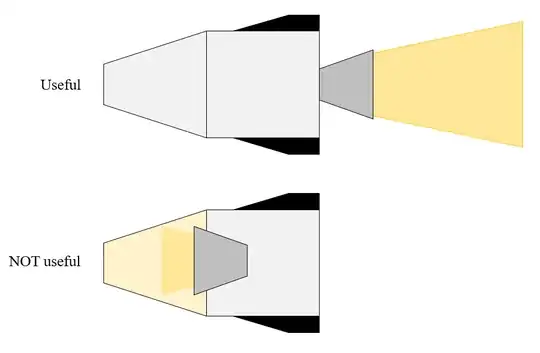Perhaps it goes without saying, but according to Newton’s laws “every action has an equal and opposite reaction”. How do astronauts, especially those inside small spacecraft like the Crew Dragon, not “push” the spacecraft when they bounce and push off walls? In orbit, where even button-sized ion thrusters push spacecraft, how does an astronaut pushing against a wall not cause it to move or spin?
4 Answers
When an astronaut bumps against the wall of the spacecraft, the spacecraft does gain whatever momentum the astronaut transfers to the wall. However, the astronaut loses momentum-or gains it in the opposite direction. The net result is that the center of mass of astronaut- plus-spacecraft does not move, and the combined momentum does not change.
It is worthy of note that, similarly, the combined angular momentum does not change. However, the orientation of the axes of the combined system can change, so there is not a perfect analogy between translation and rotational motion. See "How cats land on their feet".
- 25,240
- 3
- 32
- 81
How do astronauts, especially those inside small spacecraft like the Crew Dragon, not “push” the spacecraft when they bounce and push off walls?
You're right that when an astronaut collides with the walls of the spacecraft, some of their momentum is transferred to the spacecraft and in turn their momentum either reduces or gets reversed in direction. However, as S. McGrew states in his answer, the centre of mass of the system (astronaut + spacecraft) doesn't move in the long term. This is a result of the law of conservation of linear momentum.
Apart from this, the mass of the astronaut is comparatively lesser than the mass of the spacecraft. So the combined centre of mass remains almost close to the centre of mass of the spacecraft irrespective of the position of the astronaut inside the pressurized compartment. So the combined centre of mass and hence the centre of mass of the spacecraft moves very little due to this collision.
In orbit, where even button-sized ion thrusters push spacecraft, how does an astronaut pushing against a wall not cause it to move or spin?
Even the world's most powerful rocket engine cannot move a spacecraft if its nozzle is mounted "inside" the spacecraft such that all the exhaust particles have no way to go out.

In short this is because, any useful momentum gained by the action of the engine is cancelled by the collision of exhaust particles on the opposite side of the nozzle and hence causing no motion of the centre of mass in a long duration.
Rotation of a spacecraft is an interesting thing! In addition to reaction control thrusters (usual rocket engines), spacecrafts are equipped with reaction wheels and/or control moment gyroscopes. When the flywheel is made to rotate with high angular velocity with a motor, it gains some angular momentum in one direction. And since the spacecraft is a closed system, its angular momentum must remain constant, and hence the spacecraft gains an angular velocity in the direction opposite to the spin of the flywheel to maintain the constancy of the angular momentum of the system.
In your case, an astronaut can cause the spacecraft to spin by running along the circular perimeter. Again masses (or more precisely moments of inertia) of astronaut and the spacecraft matter and the effects are usually small.
- 5,336
An astronaut pushing against the wall of a spacecraft does cause it to move due to Newton's Third Law and conservation of momentum, as you have noted. However, the movement of the spacecraft is not that noticeable for a couple of reasons. One is that the spacecraft has much more mass than the astronaut, so any change in its velocity will be much smaller the the astronaut's velocity change (in proportion to the ratio of their masses). Another is that the astronaut is inside the spacecraft, so if they push off one wall, they will eventually collide with the opposite wall, effectively cancelling out any change in the spacecraft's velocity, as the total momentum of the spacecraft + astronaut cannot change. Lastly, while it does make a difference whether or not both the astronaut and wall are moving or just the astronaut is (as the motion is non-inertial), this difference can be difficult to notice from watching a video, compared with experiencing it in-person.
- 5,496
The astronaut most certainly can cause the craft to spin, although only exceedingly slowly. If the astronaut runs around the inside of his spacecraft (AFIAK realistically only possible in Skylab) the spacecraft will rotate in the other direction to maintain the same total angular momentum. As soon as the astronaut stops running the spacecraft will also stop. As the spacecraft has far more mass the rotation of the spacecraft will be a tiny fraction of how much the astronaut moves.
Note that this is routinely done by mechanical means. Long duration missions orient the spacecraft with reaction wheels--they move a lot faster than the astronaut could but it's the same thing--and it turns the spacecraft only very slowly.
- 1,739